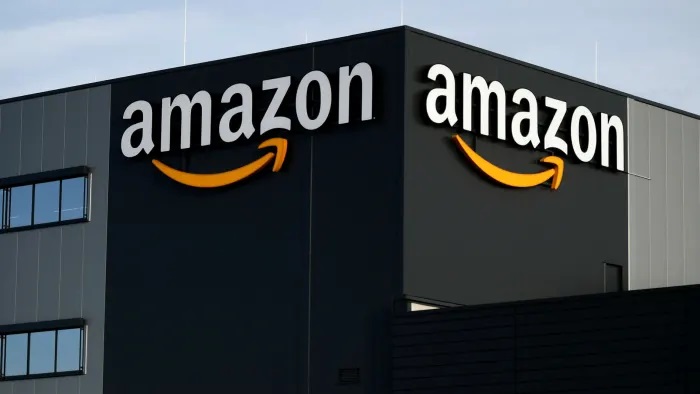Amazon Falls as Company Issues Dismal Forecast
For the first time since the dot.com bust, e-commerce giant Amazon had its slowest growth rate.
Shares fell on Thursday as Wall Street learned the news and digested the company’s quarterly results and a dismal revenue forecast that missed analyst’s estimates.
The stock dropped as much as 10% in extended trading.
For the first quarter the company reported earnings per share of $7.38 adjusted. This is compared to $8.36 expected, per Refinitiv. Revenue at $116.44 billion was higher than the $116.3 billion that was expected, per Refinitiv.
The company’s Web Services came in at $ 18.44 billion vs. $18.27 billion expected, according to StreetAccount.
Advertising was $7.88 billion vs. $8.17 billion expected, also according to StreetAccount
Amazon also recorded a $7.6 billion loss on its Rivian investment after shares in the electric vehicle company lost more than half their value in the quarter. That resulted in a total net loss of $3.8 billion.
Revenue at Amazon increased 7% during the first quarter, compared with 44% expansion in the year-ago period.
It was the slowest rate for any quarter since the dot-com bust in 2001 and the second straight period of single-digit growth.
For the second-quarter, the company forecasts growth could drop to between 3% and 7% from a year earlier. Amazon said it projects revenue this quarter of $116 billion to $121 billion, missing the $125.5 billion average analyst estimate, according to Refinitiv.
“The pandemic and subsequent war in Ukraine have brought unusual growth and challenges,” Amazon CEO Andy Jassy said in a statement.
According to Jassy, the company is “squarely focused” on offsetting costs in its fulfillment network now that staffing and warehousing capacity are at normal levels.
The company’s operating margin, or the money that’s left after accounting for costs to run the business, dipped to 3.2% in the first quarter from 8.2% a year earlier.
“This may take some time, particularly as we work through ongoing inflationary and supply chain pressures, but we see encouraging progress on a number of customer experience dimensions, including delivery speed performance as we’re now approaching levels not seen since the months immediately preceding the pandemic in early 2020,” Jassy added.
Amazon also confirmed Thursday that this year’s Prime Day will take place in July. Last year, Amazon held Prime Day in June. By moving the two-day discount event to the third quarter, it could potentially hurt year-over-year comparisons for revenue in the second quarter while boosting third-quarter results.
Disclaimer: We have no position in any of the companies mentioned and have not been compensated for this article.


